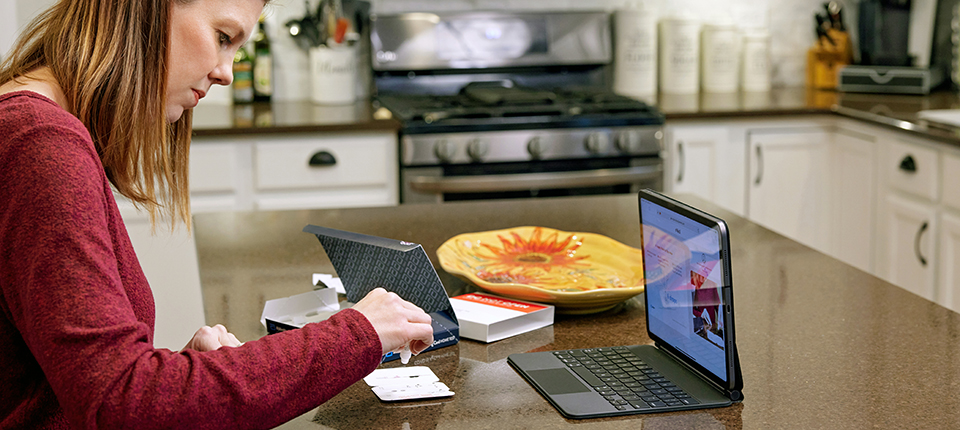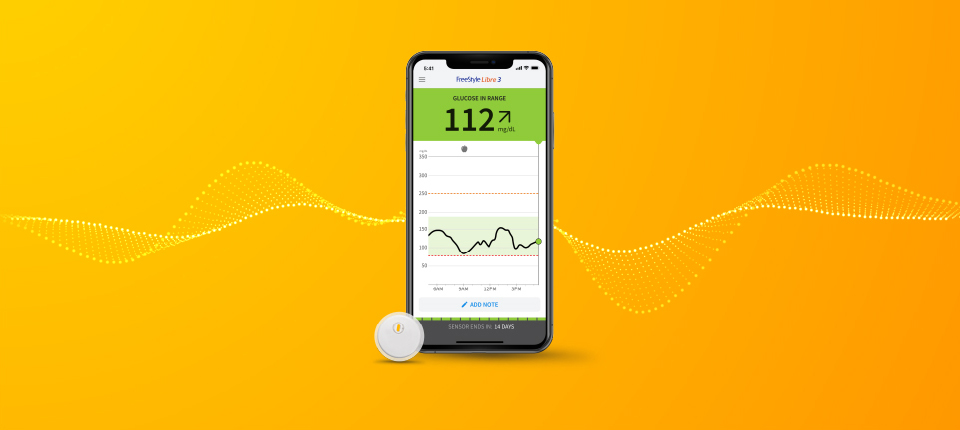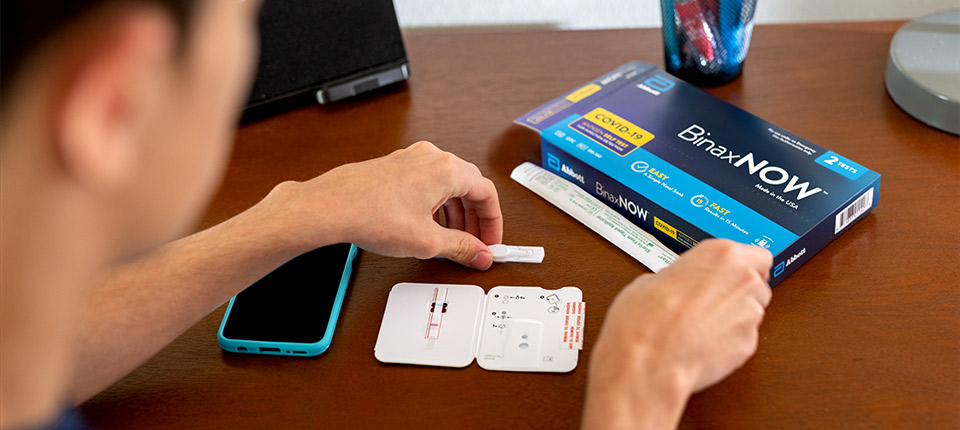But you brought up the home test. The next step was to say how do we also again continue to expand out access by bringing it into the home required us to look again to an alternative solution which was to now partner with our telehealth partner eMed to be able to send a test to a person’s home and then to be able to have them work with our telehealth partner to have them bring and guide an individual to be able to take a test over a computer screen like we’re doing right now and to be able to guide them to run the test and interpret the test and then get their result via our complementary mobile app NAVICA to be able to get, if they’re negative, a digital health pass right there and then. And if they’re positive, to be informed to talk to their healthcare provider. So again, this is some of what we did to bring that to market in such a short period of time.
MC: So Andrea, what is the demand looking like for these tests now? Are you able to meet what the demand is and are people embracing this at-home testing.
AW: So the demand continues to grow. What we see at the beginning of the year is that as the pandemic is continuing to surge and people are feeling more of an urgency to get back to normalcy, to get back to work and get back to school, we’re continuing to increase our capacity and continuing to look at what we can build. So, for our at-home testing just in the first quarter alone, we’re going to be bringing 30 million tests to the market and ramp up 90 million of those at-home tests in the second quarter. And yes, we see that the demand is going to surpass the supply and so we’re going to continue to look at how we can expand in manufacturing capacity to continue to meet what the world is needing from us.
MC: Of course, the question that everybody is really hanging on here is when are we going to be able to get back to school, to work in person, to social events, to entertainment, concerts, plays, that type of thing? To what extent is testing going to help us do that? And Andrea, tell me, what will that look like? Walk me through a morning of going into a school or going into a workplace or going into a concert.
AW: Absolutely. Testing is a critical first-line of defense. It needs to be used in context with other hygiene practices of wearing your mask and washing your hands and by no means does this replace that. It comes together along with vaccinations. So, the more you can test, the more you can catch the virus. It’s just simple math. Because at any one point in time, anyone can become infected.
So the frequency of testing is very important to be able to catch someone when their infectious and can pass on the virus. So the protocols in terms of how best to do that? The CDC has put out guidelines, the Rockefeller Foundation has guidelines.
But what we could see is its best used for example in any environment, depending on what your protocol is, to be able to test and be able to provide on the spot people with that negative entry card, that digital pass that shows “I’ve been tested” and now I can show that pass before I enter whatever environment, like a boarding pass or a NAVICA complementary mobile app can be used like a boarding pass.
So I go and I get my test and then I can demonstrate that I have been tested and I’m safe to enter along with my other entry passes. The more that a school or a workplace, the more frequent that they can do that testing, the better off you’re going to be in slowing the transmission of the virus and catching those who can put your environment at risk.
MC: To what extent is testing going to remain important as we start getting higher levels of vaccination across the United States and the rest of the world?
AW: What we see is that the vaccination rollout, this needs to be done in conjunction with that. The vaccination rollout, it’s going to take time to get everyone vaccinated, there’s going to be individuals that are not comfortable with being vaccinated, and the demand continues to rise as people are trying to get back to work and school. So it needs to be done together and right now it’s about detecting the virus, and as soon as we can have high levels of vaccination, some of the testing is going to turn to also antibody testing, determining how effective these vaccines are, how responsive individuals are to these vaccines.
So we see throughout the first half of the year, heavy rapid testing, heavy detection testing as we move into the back half of the year. We’re also going to see more antibody testing.
But then, as we get to the end of the year, even as the virus is hopefully more manageable, we’re going to be entering the flu season for ’21 and ’22, and this may end up being more testing like we see in regular flu on a normal respiratory season. So again, the needs are going to continue.
The volumes are what’s uncertain. And our goal is to make sure that we have the capacity to be able to address both across rapid testing and antibody testing what’s needed.
MC: Well, it is truly amazing what Abbott has done in terms of bringing 300 million tests to the market in just a year so we can actually start to see this virus, which of course has been spreading silently in front of all of us and keeping us all in our homes. So here’s to a better 2021, more testing, and thank you so much for joining us. It was really a great conversation.
AW: Thank you for having me.









FOLLOW ABBOTT